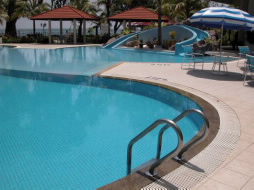FOR IMMEDIATE RELEASE
ACS News Service Weekly PressPac: July 27, 2011
First measurements of HAAs in urine of swimmers and pool workers
“Haloacetic Acids in Swimming Pools: Swimmer and Worker Exposure”
Environmental Science & Technology
The first scientific measurements in humans show that potentially harmful haloacetic acids (HAAs) appear in the urine of swimmers within 30 minutes after exposure to chlorinated water where HAAs form as a byproduct of that water disinfection method. Reported in the ACS journal Environmental Science & Technology, the study found that HAAs also appeared in the urine of swimming pool workers.
Mercedes Gallego and M.J. Cardador point out that government regulations in the United States and Europe limit the levels of HAAs that can appear in drinking water, also purified mainly by chlorination. The limits stem from research suggesting that elevated levels of HAAs in municipal drinking water supplies may be linked to birth defects and a higher incidence of some cancers. However, few studies have examined HAA exposure from swimming pools, where water may contain higher levels due to recirculation systems that lengthen water’s exposure to chlorine and provide more time for HAAs to form.
Gallego and Cardador measured HAA levels in the urine of 49 volunteers who swam in or worked around an indoor and outdoor pool. “The results showed that HAAs appeared 20-30 minutes after exposure and were eliminated [from the body] within three hours,” they note. Over 90 percent of the exposures probably occurred as a result of swallowing pool water. Far fewer HAAs were inhaled or taken in through the skin. Children were more likely than adults to have a high concentration of HAAs after swimming and swimmers accumulated HAAs almost four times as fast as people working around the pool.
The authors acknowledge funding from the Spanish Ministry of Science and Innovation, the Junta de Andalucia, and FEDER.
![]()

potentially harmful haloacetic acids (HAAs) in the
urine of swimmers and pool workers.
Contact
Science Inquiries: Michael Woods, Editor, 202-872-6293
General Inquiries: Michael Bernstein, 202-872-6042


